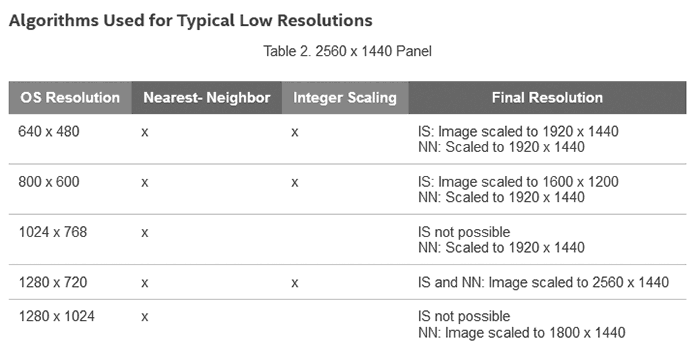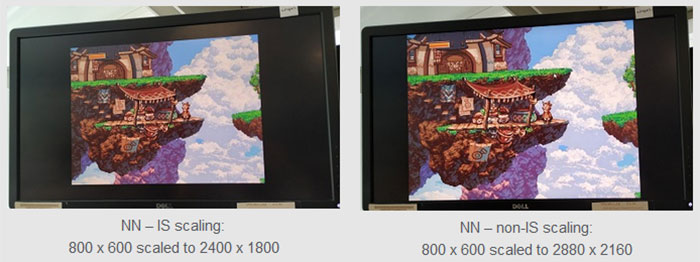Last month HEXUS reported upon Intel's stated intentions to bring integer scaling graphics support to Intel Graphics this year. The report was based on an Intel Reddit AMA and a Lisa Pearce Tweet, so it is good to see that Intel has now followed up with more official details via an Intel Game Developer Zone blog post. Enthusiasm for Intel's driver level support for integer scaling seems to be strongest within the retro gaming and emulation communities. However, it won't support source resolutions below 640 x 480, initially.
Importantly, and as we already knew from last month's report, Integer Scaling Support for Intel graphics will only be available with the following conditions met:
- You will need an Intel processor that features Gen 11 graphics.
- The first driver enabling this support will be ready in "late August 2019".
- Minimum source game resolution supported is 640 x 480 pixels.
In the introduction to its blog post, Intel highlights the appeal of Integer scaling (IS) and a Nearest-neighbour (NN) image scaling modes. In brief these scaling techniques preserve the sharp, blocky images of pixel/retro game that deliver their distinctive look. In the Intel Graphics Command Centre (IGCC) Intel is going to provide toggles for both IS and NN, for added flexibility.

There are a number of factors determining the availability of pure integer scaling. Intel provides a trio of common monitor resolution charts to show which kinds of scaling are workable on each monitor, depending upon source game. Above I've included the 2560 x 1440 monitor table. Below are some example scenarios for you to ponder over.
- Example 1: Scaling a game running at a resolution of 640 x 480 (4:3 aspect ratio) on a 3840 x 2160 (16:9 aspect ratio) panel. In this case, IS will not occur by default because the full height of the display panel would not be used. In this case, the user would need to force IS to yield an image with a resolution of 2560 x 1920, and black borders would fill the remaining space. Without forcing IS, the driver scales the image to 2880 x 2160 and puts borders on only the sides.
- Example 2: Scaling a game running at a resolution of 800 x 600 on a 1920 x 1080 display. In this case, IS is not possible because scaling the height of the image by any integer greater than 1 would yield an image with a height greater than the display. As a result, the game would be rendered at the original resolution and be centered on the panel surrounded by black borders.
Reading through the examples above, you can see that the late August driver will allow users to force black borders with IS restricted to the greatest possible integer. Within the driver, the 'Maintain Aspect Scaling”' option will yield the best experience when NN-mode is enabled, says Intel.

4K monitor scaling examples
Intel provided some screenshots of NN-IS, and NN-non IS games running on a 4K (3840 x 2160) monitor in various source resolutions upscaled. However, it only provided very small screengrabs (375 pixels wide) in each case, which isn't so useful for pixel peepers. As for supporting game resolutions below 640x480 pixels, Lisa Pearce says that lower resolutions will be considered in subsequent driver updates.













